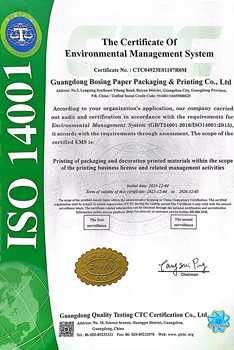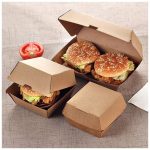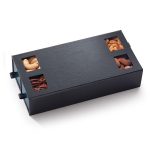In the bustling world of food service and delivery, one element often goes unnoticed despite playing a crucial role in preserving quality, ensuring safety, and enhancing convenience: the corrugated food packaging box. These humble containers have evolved from simple cardboard carriers to sophisticated solutions that address multiple challenges faced by restaurants, food producers, and consumers alike. Their unique structure, combining durability with lightweight properties, makes them indispensable in today’s fast-paced culinary landscape.
The secret behind the effectiveness of corrugated boxes lies in their innovative design. Featuring a fluted medium sandwiched between two liners, this construction creates air pockets that provide exceptional insulation and cushioning. This means your pizza stays hot, your salads remain crisp, and your delicate pastries arrive intact. Unlike rigid plastic containers or flimsy wrappers, corrugated boxes maintain their structural integrity while allowing moisture to escape, preventing sogginess and preserving texture—a critical factor in food quality that often determines repeat business.
Sustainability has become a non-negotiable aspect of modern packaging, and corrugated boxes excel in this arena. Made primarily from renewable resources like recycled paper and sustainably sourced wood fiber, these containers are fully biodegradable and widely accepted in recycling programs worldwide. Many manufacturers now offer options lined with compostable coatings, making them an environmentally responsible choice that aligns with growing consumer demand for eco-friendly practices. As plastic pollution concerns mount, the food industry’s shift toward corrugated solutions represents a significant step forward in reducing environmental impact.
Beyond functionality and sustainability, corrugated food packaging offers unparalleled branding opportunities. The printable surface serves as a blank canvas for restaurants to showcase their identity through custom logos, vibrant colors, and engaging messaging. This transforms every delivery into a marketing opportunity, creating memorable unboxing experiences that strengthen customer connection. In an era where social media sharing of food experiences is commonplace, aesthetically pleasing and Instagram-worthy packaging can significantly boost brand visibility and recognition.
The versatility of corrugated packaging continues to expand with technological advancements. Specialized treatments now provide grease resistance for oily foods, moisture barriers for liquid-based dishes, and even antimicrobial properties for enhanced food safety. Manufacturers have developed innovative designs featuring built-in dividers for multi-item orders, ventilation systems for crispy foods, and secure closure mechanisms that prevent spills during transportation. These developments demonstrate how corrugated boxes have evolved to meet the diverse and demanding needs of modern cuisine.
From economic perspective, corrugated boxes present a cost-effective solution for businesses of all sizes. Their lightweight nature reduces shipping costs, while efficient stacking capabilities minimize storage space requirements. The scalability of production allows small artisanal producers to access professional-grade packaging previously available only to large corporations. This democratization of quality packaging enables emerging food businesses to compete effectively while maintaining high standards of product presentation and protection.
As we look toward the future of food packaging, corrugated solutions continue to innovate. Smart packaging integrations featuring QR codes for ingredient information, temperature indicators, and even augmented reality experiences are emerging. The development of enhanced recycled materials and more efficient manufacturing processes promises to further reduce the environmental footprint. These advancements ensure that corrugated food packaging will remain at the forefront of the industry’s evolution, continuing to balance practical functionality with environmental responsibility.
In conclusion, the corrugated food packaging box represents a perfect synergy of practicality, sustainability, and innovation. It silently supports the global food ecosystem by ensuring that meals reach consumers in optimal condition while minimizing environmental impact. As consumer expectations evolve and environmental concerns grow, these versatile containers will undoubtedly continue to adapt and thrive, maintaining their position as an essential component in the world of food service and delivery. The next time you receive a perfectly preserved meal in a corrugated box, take a moment to appreciate the engineering marvel and thoughtful design that made it possible.




Leave a Message